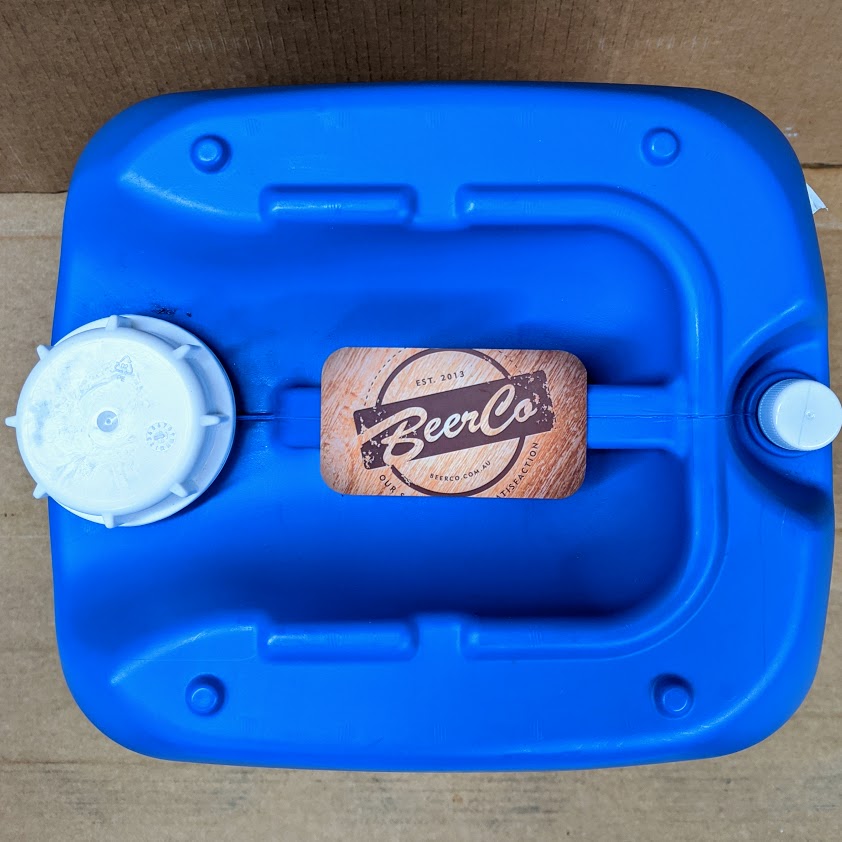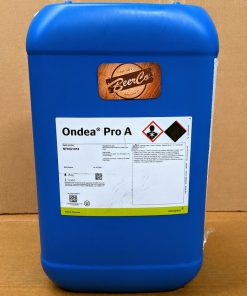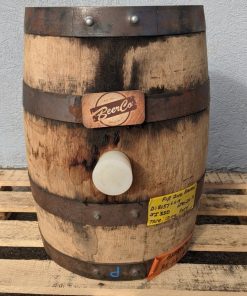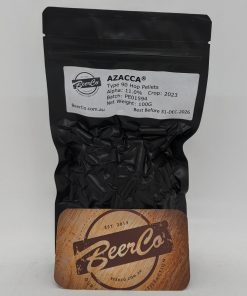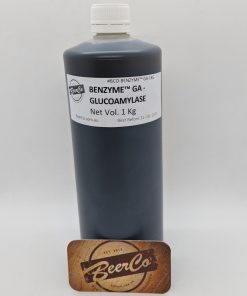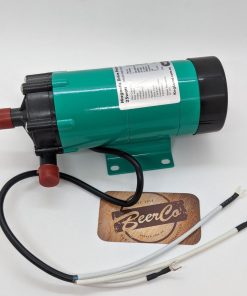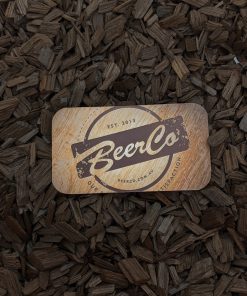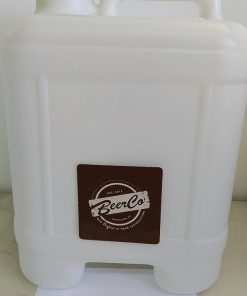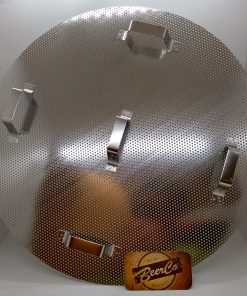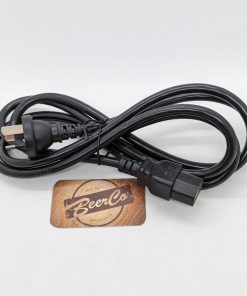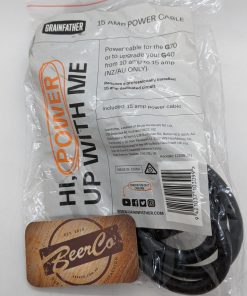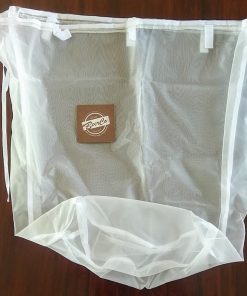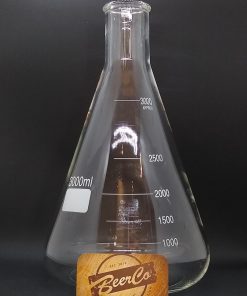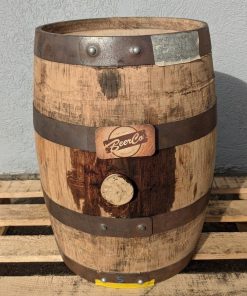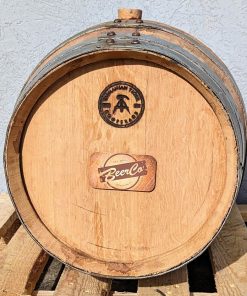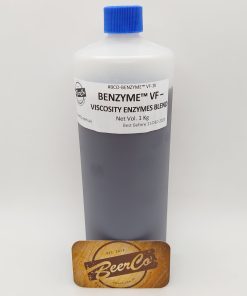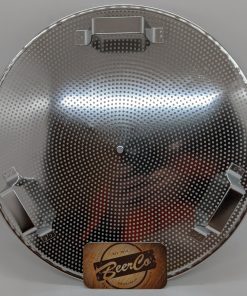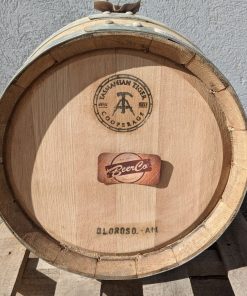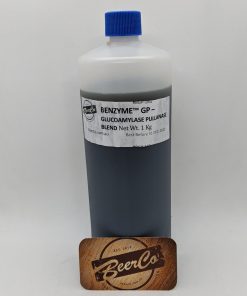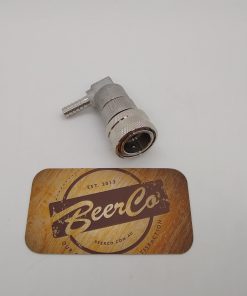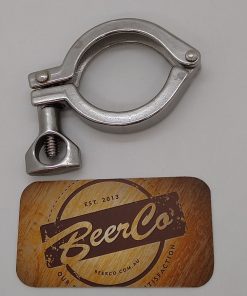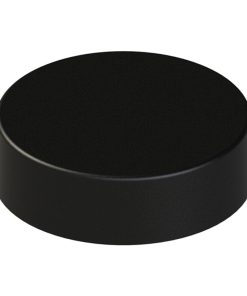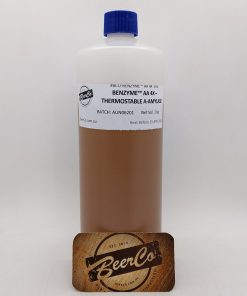Novozymes – Ondea® Pro A – Multi-Enzyme Blend – 25 Kg novozymes
$ 1.928,65 $ 482,16
Novozymes Ondea® Pro A is the only solution for 100% barley brewing. It’s formulated to secure efficient viscosity, turbidity reduction, protein degradation and controlled attenuation.
Ondea® Pro A is a blend of pullulanase, α-amylase, cellulase, xylanase, protease and lipase. It works with endogenous barley proteases and β-amylases. This synergistic activity gives you optimal brewing results.
Key Benefits include:
Streamlined delivery of multiple enzymes
The enzymes in this product act on different substrates. That means they have complementary effects on your raw materials and brewing performance. This pre-blended solution gives you these benefits in a simple, streamlined way.
100% barley brewing
This product allows you to generate a standard fermentable wort with any proportion of barley, all the way up to 100%. All you need to do is optimize your mill settings for barley. Otherwise, your regular brewing conditions remain unchanged.
Partial barley and/or undermodified malt brewing
The enzymes in this blend work in synergy with the existing enzyme systems in your raw materials. That means you can partially replace malt with barley and/or include under-modified malts in your brews.
Cut operational costs and increase yield, quality and process efficiency, compared to standard barley solutions. Novozymes Ondea® Pro A lets you use barley of various grades, levelling out differences in barley quality to increase raw material flexibility. You can also reduce your carbon footprint by using local raw materials.
Novozymes – Ondea® Pro A key enzyme activity is provided by pullulanase that hydrolyzes (1,6)-alpha-D-glucosidic linkages in pullulan, amylopectin and glycogen.
Traditionally, barley is used as the raw material for the production of beer. Today, breakthrough technology is making brewing more diverse than ever before with the use of enzymes. Enzymes are needed to digest cell walls, release amino acids, and breakdown starch into fermentable sugars.
Ondea® Pro is a multi-enzyme blend formulated to secure efficient viscosity, turbidity reduction, protein degradation, and controlled attenuation. With 6 different enzyme activities, the brewing possibilities are unlimited with the use of Ondea® Pro. Ondea® Pro can be used to take the guesswork out of your brewing, whether you would like to brew traditionally to improve your brewing process, use high adjuncts, brew a gluten free beer, or brew with raw barley or a new raw material altogether to cut costs and/or create new flavors. The horizon is wide open when you choose to brew with Ondea® Pro!!!
Creating beverages with unmalted barley
Barley is a traditional raw material used in the production of beer. To convert barley grains into fermentable wort, enzymes are needed to break down cell walls, release amino acids and break down starches into fermentable sugars.
Novozymes Ondea® Pro makes it possible to generate a standard fermentable wort with any proportion of barley under regular brewing conditions.
With Ondea® Pro, the quality requirements for barley are less strict compared to barley used for malting. This allows for greater flexibility in sourcing different barley qualities.
PRODUCT CHARACTERISTICS/PROPERTIES
Component name: Pullulanase
Activity: 637 PUN-J/g
Other activities:
- Alpha-amylase
- Cellulase
- Xylanase (endo-1,4-)
- Protease (neutral)
- Lipase
Color: Brown
Physical form: Liquid
Approximate density (g/ml) 1.21
Color can vary from batch to batch. Color intensity is not an indication of enzyme activity.
Novozymes – Ondea® Pro A – Product Data Sheet
Novozymes – Ondea® Pro A – Safety Data Sheet
Certificate of Analysis:
- Batch # NFNG1038 Best Before 11 Nov 2023
Application
Raw material optimization
Benefits:
1. Maximize use of raw materials and cost savings
● Higher extract yield
● Enables the use of unmalted barley
● Efficient wort and beer filtration
● Control of FAN (free amino nitrogen) and fermentability
● Improved foam stability
● Fit with standard equipment and mashing times
● High adjunct decoction is possible
● High Gravity Brewing with up to 26°P (first wort) is possible
● Production of high-quality beer
● Flexible sourcing of raw materials
2. Reduce carbon footprint
● CO2 emissions can be reduced by ≤8%
● Save ≤3 kg CO2 per hl of beer
3. Increase the platform for new branding
● A beer based on up to 100% barley
● Flexibility to match the current beer profile
Product
Ondea® Pro is a multi-enzyme blend formulated to secure efficient viscosity, turbidity reduction, protein degradation, and controlled attenuation. The enzyme works in synergy with the barley’s endogenous enzymes to produce fermentable wort. In conjunction with endogenous barley proteases and β-amylases, the enzymes in Ondea® Pro create synergetic effects to achieve the most successful brewing results.
Usage and dosage instructions
Raw material quality
Barley with high enzyme activity is required when using Ondea® Pro. As a raw material for beer production, barley must comply with respective national and regional regulations for food use regarding mycotoxins, pesticide residues and heavy metals. It must also be free of foreign material such as stones, wood, and metal particles. Furthermore, no more than 4% of barley may be ≤2.2 mm in size. The extract yield achieved from barley is like that achieved with dry-basis malt.
Milling
In contrast to malt, barley is significantly harder and has a higher initial water content (approx. 12–14%). To ensure comparable performance, the mill needs to be adjusted to a higher power uptake.
Mash filter
For mash filter use, a standard hammer milling procedure (with adjusted power uptake), or any comparable system such as Dispax, is sufficient. When cleaning the mash filter, spent grains will fall off the filter sheet most efficiently when the dry matter load is comparable to that of malt. To achieve similar gravity, mashing water should be reduced accordingly.
Lauter tuns
When using a lauter tun, milling and resulting grist composition are critical to good lauter performance. Husk preservation is vital for effectively building up the filter bed. For good milling results, it is recommended to use barley of a homogeneous size of 2.2 mm. Two-, four- and six-roller mills can be used. The mill settings need to be adjusted for barley processing.
Recommended grist composition is shown in figure 1.

The grist composition for barley needs to be coarser than for malt, which is critical for good lautering performance.
More dosage information can be found in the “Brewing Handbook”.
-
Mashing-in
Typically, temperature of 53°C, 15-30 minutes
-
Mashing temperature
Ensure that the highest temperature during mashing-in and throughout the first 30 minutes (protein rest) does not exceed 53°C. Saccharification time should not exceed 64°C to support the performance of the heat-sensitive barley β-amylase.
-
Mashing pH
The natural barley mashing pH of typically ≥5.7 should not be decreased below 5.6 and should not be higher than 5.9 to avoid high turbidity.

Fig. 2. Example of infusion mashing to achieve 70% RDF (real degree of fermentation)
-
Mash agitation
Continuous stirring is required throughout mashing to prevent the settling down of grist and ensure good enzyme performance.
- Iodine test
The typical iodine test carried out after saccharification might still be positive when brewing with Ondea® Pro. This is not an issue, as Ondea® Pro contains a thermostable α-amylase that still degrades starch during mashing-off and lautering. The final filtrate in the kettle will always be iodine-normal.
-
Wort pH
The wort must be acidified to a pH of 5.2 before boiling to support the pH drop during fermentation.
-
Hopping
Experience with 100%-barley beer shows that 10–20 % less hopping is required to achieve a similar bitterness perception.
-
FAN control
In case higher FAN levels are needed, an extended rest at 50°C for 30–60 minutes is recommended.
Proteolytic components work in synergy with the endogenous enzymes of barley. FAN generation is directly linked to grain protein content. Using barley with a high protein content can be an advantage in Ondea® brewing. The FAN in barley wort is easier to assimilate by the yeast, therefore, the barley wort needs only 9–12 mg FAN/L/°P to ensure good fermentation.
-
Sugar profile and fermentability
Ondea® Pro results in a maltose-based sugar profile (fig. 3). Should a different sugar profile be favored, apply changes in the mash profile and/or an additional dosage of Attenuzyme®.
Product data
Fig. 3. Sugar profile of a wort processed with 100% barley using a fine and coarse milling set-up
Malt inclusion
Ondea® Pro is designed to brew a standard beer based on 100%-unmalted barley, but malt inclusion is possible and should be considered as a tool to:
● Obtain desired beer taste directly, if blending is not an option
● Generate more FAN and fermentable sugars
● Improve lauter performance related to raw material quality and process variation
Ondea® Pro is also suitable to produce flavored beers or any type of non-alcoholic grain-based beverage. In addition, it is possible to produce extracts from unmalted cereals.
Dosage
Ondea® Pro 1.2–2.2 kg/ton of barley (depending on malt-barley ratio)
The dosage depends on the amount of barley used in the recipe. Higher amounts of barley require a higher dosage of Ondea® Pro per ton of barley, while higher malt inclusion reduces the dosage of Ondea® Pro required per ton of barley. The enzyme should be dosed at the start of mashing-in, when approx. 30% of the grist is loaded.
More information about these products is available in the Novozymes Brewers Handbook.
Stability
Please see the Novozymes – Ondea® Pro A – Product Data Sheet
Safety, handling and storage
Safety, handling and storage guidelines are provided with all products. Please see the Novozymes – Ondea® Pro A – Safety Data Sheet
| Size | 25KG |
|---|
Fast shipping and professional packing
We offer a wide range of shipping options due to our long-running partnerships with UPS, FedEx and DHL. Our warehouse staff are highly trained and will package your items according to our precise and precise specifications. Before shipping, all goods are thoroughly inspected and securely secured. Every day we ship hundreds of packages to our customers from all over the world. This is a sign of our commitment to be the largest online retailer worldwide. The warehouses are located situated in Europe as much as they are in USA.
Note: Orders containing multiple items will have a different processing period for each item.
Before shipping the items, our staff will carry out an extensive inspection of the products you have ordered. The majority of orders are delivered within 48 hrs. The delivery time should be between 3-7 working days.
Returns
We don't manage the stock in our factory and warehouse. Actual stock levels may fluctuate at any moment. Be aware that it's possible that your order will be out of stock after you have placed the order.
Our policy is for 30 days. Unfortunately, if 30 days have passed from the date you purchased the product, we are unable to offer you a return or exchange.
The item must not be used, and it must be in the original packaging. It must also be in the original packaging.
Related products
Brewing Aids
Equipment
Equipment
Equipment
Equipment
Brewing Aids
Brewing Aids
Brewing Aids

